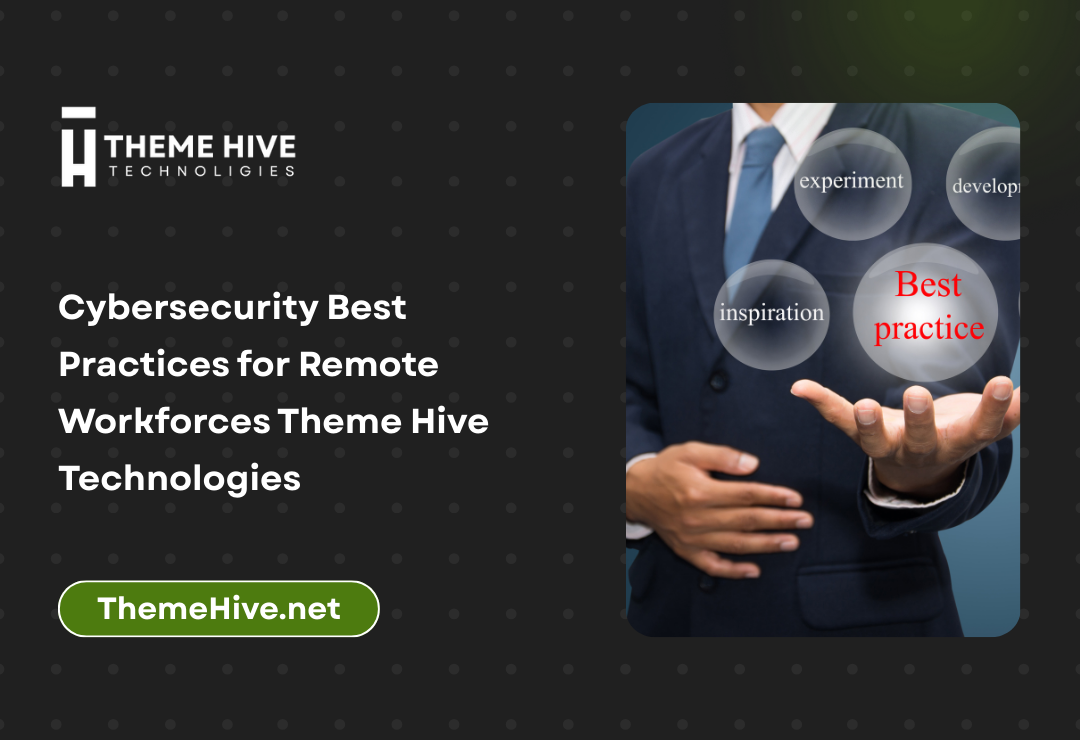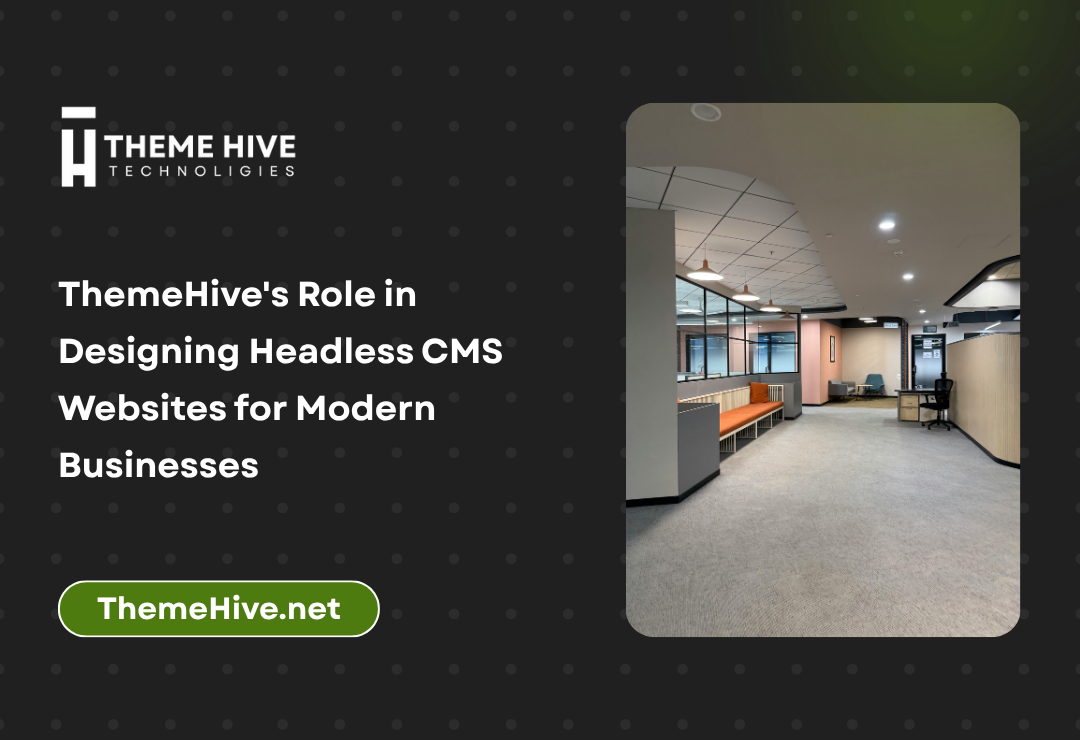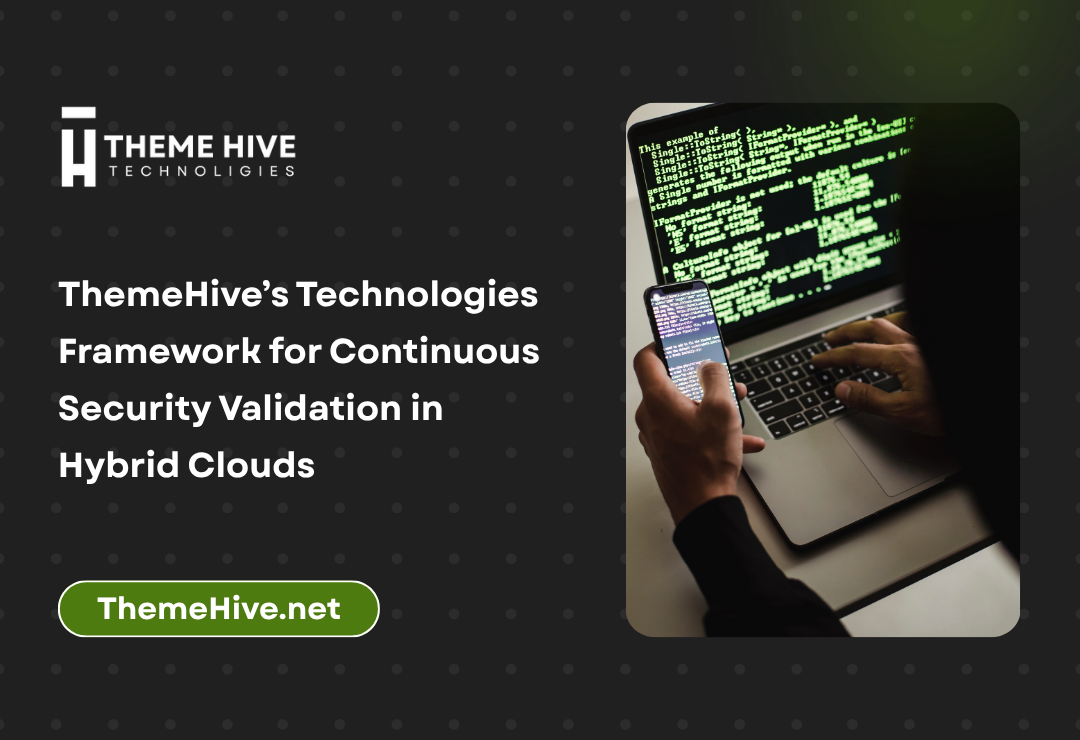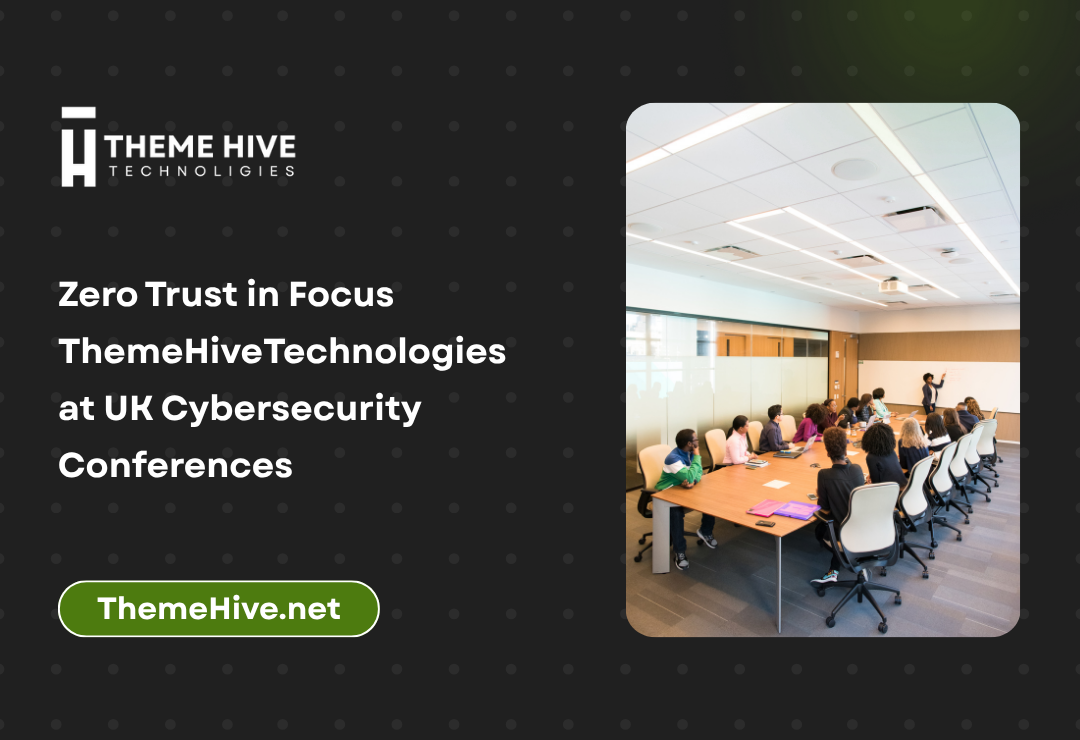The rise of remote work has transformed how businesses operate worldwide. From small enterprises to large corporations, organizations now rely on distributed teams to maintain productivity and resilience. However, this transition has also brought significant cybersecurity challenges. With employees accessing sensitive company data from home networks, personal devices, and cloud-based platforms, the risks of cyberattacks, data breaches, and compliance violations have increased dramatically.
To protect business operations, organizations must adopt cybersecurity best practices for remote workforces. This article explores essential strategies, technologies, and frameworks that can safeguard remote teams while ensuring operational efficiency. Additionally, we will highlight how companies such as ThemeHive Technologies and Theme Hive Technologies help businesses implement secure remote work environments.
The Changing Cybersecurity Landscape with Remote Work
Remote work environments have expanded the attack surface for cybercriminals. Unlike traditional office settings where IT teams could manage security through centralized systems, remote workforces rely on diverse home setups and devices. Some major challenges include:
- Unsecured home networks that lack enterprise-level protections.
- Personal device usage without adequate security controls.
- Phishing attacks targeting remote workers through deceptive emails and messages.
- Cloud vulnerabilities arising from misconfigurations or weak access policies.
- Insider threats from employees mishandling sensitive data.
Understanding these risks is the first step toward developing comprehensive best practices for cybersecurity in remote work.
Why Cybersecurity is Critical for Remote Workforces
1. Protecting Sensitive Data
Remote employees often handle customer data, financial records, and intellectual property. Breaches could lead to compliance fines, legal consequences, and reputational damage.
2. Preventing Financial Losses
Cyberattacks such as ransomware can cripple businesses by locking critical files until a ransom is paid. SMEs and enterprises alike risk financial losses without adequate defenses.
3. Ensuring Business Continuity
A secure remote environment minimizes downtime caused by cyber incidents, enabling companies to continue operations without disruption.
4. Maintaining Compliance
Industries such as healthcare, finance, and retail must comply with regulations like GDPR, HIPAA, and PCI-DSS. Non-compliance due to weak remote security could result in hefty penalties.
5. Preserving Trust
Strong cybersecurity fosters trust among clients, partners, and employees, strengthening business relationships.
Core Cybersecurity Best Practices for Remote Workforces
1. Strong Authentication Mechanisms
- Multi-Factor Authentication (MFA): Require employees to use at least two verification methods, such as passwords and mobile OTPs.
- Single Sign-On (SSO): Simplifies login processes while centralizing access control.
2. Secure Endpoints
- Device Management: Enforce the use of company-issued or managed devices.
- Endpoint Protection Software: Install antivirus, anti-malware, and intrusion detection tools.
- Regular Updates: Ensure operating systems and applications are updated with the latest patches.
3. Virtual Private Networks (VPNs)
VPNs encrypt internet traffic, allowing employees to securely access corporate resources from any location. Enterprises should provide robust VPN solutions with strong encryption standards.
4. Cloud Security
- Secure Configurations: Properly configure cloud services to avoid accidental exposure.
- Data Encryption: Encrypt files both in transit and at rest.
- Access Controls: Limit cloud access based on employee roles.
5. Phishing Awareness Training
Regularly train employees to recognize phishing attempts and social engineering attacks. Simulated phishing campaigns can help reinforce awareness.
6. Zero Trust Architecture
Adopt a Zero Trust model where no device or user is automatically trusted. Verification is required at every access point.
7. Strong Password Policies
- Require long, complex passwords.
- Encourage the use of password managers.
- Implement automatic password expiration.
8. Secure Collaboration Tools
Use enterprise-grade collaboration platforms with strong security measures such as Microsoft Teams, Zoom for Business, or Slack Enterprise.
9. Regular Security Audits
Conduct vulnerability assessments and penetration testing to identify and address weaknesses.
10. Incident Response Planning
Develop and communicate clear response plans for cyber incidents. Employees should know how to report suspicious activity and whom to contact.
The Role of Managed Security Services
Many SMEs lack dedicated IT security teams. This is where ThemeHive Technologies and Theme Hive Technologies step in, offering managed security services tailored for remote workforces. Their services include:
- Cloud security assessments and monitoring.
- Endpoint protection management.
- 24/7 threat detection and incident response.
- Compliance management and reporting.
- Employee cybersecurity training programs.
Partnering with these providers allows businesses to focus on growth while experts handle their security needs.
Advanced Cybersecurity Practices for Remote Teams
1. Endpoint Detection and Response (EDR)
EDR tools monitor devices for suspicious activity and respond automatically to neutralize threats.
2. Secure Access Service Edge (SASE)
Combines networking and security into a single cloud-delivered service, ideal for managing remote users.
3. Artificial Intelligence in Security
AI-powered systems detect anomalies and predict potential breaches before they occur.
4. Data Loss Prevention (DLP)
DLP solutions monitor and restrict the transfer of sensitive data outside corporate boundaries.
5. Encryption of Communication Tools
End-to-end encryption in chat and video conferencing tools ensures privacy.
Cybersecurity Challenges Unique to SMEs
- Limited Budgets: SMEs may struggle to afford enterprise-grade solutions.
- Skill Shortages: Lack of in-house expertise hampers security implementation.
- Rapid Scaling: As SMEs grow, security systems must adapt quickly.
- Shadow IT: Employees may use unauthorized apps, increasing risks.
- Third-Party Risks: Vendors and partners with poor security practices can be entry points for attackers.
Best Practices for Employees in Remote Workforces
- Use Company-Issued Devices: Avoid personal laptops or smartphones for sensitive work.
- Enable Firewalls: Protect home networks with firewalls and strong Wi-Fi passwords.
- Beware of Public Wi-Fi: Use VPNs when connecting outside secure networks.
- Back Up Data Regularly: Store backups in secure cloud or offline storage.
- Stay Updated: Keep applications and systems current with updates.
- Report Incidents Promptly: Inform IT teams of suspicious emails or device behavior immediately.
The Future of Remote Work Cybersecurity
Remote work is here to stay, and cybersecurity practices will continue evolving. Key trends include:
- Increased Use of AI and Machine Learning: Automated detection and response will become standard.
- Wider Adoption of Zero Trust Models: Continuous verification will replace traditional perimeter defenses.
- Greater Focus on Privacy: Businesses will prioritize protecting employee and customer data.
- Integration of Cybersecurity into Business Strategy: Security will no longer be a separate function but a core aspect of business planning.
- Rise of Cyber Insurance: Companies will adopt insurance policies to mitigate financial risks from cyber incidents.
Conclusion
Cybersecurity is an essential foundation for remote workforces. By implementing best practices such as strong authentication, secure endpoints, VPNs, cloud security, and continuous employee training, businesses can protect themselves from evolving threats. Managed service providers like ThemeHive Technologies and Theme Hive Technologies are playing a crucial role in supporting SMEs and enterprises in building resilient security frameworks.
As remote work continues to grow, organizations must remain proactive in strengthening their defenses to ensure safe, productive, and sustainable operations.
Internal Links
- Theme Hive IT Agency Home
- About Theme Hive
- Theme Hive Services
- Theme Hive News & Articles
- Contact Theme Hive







